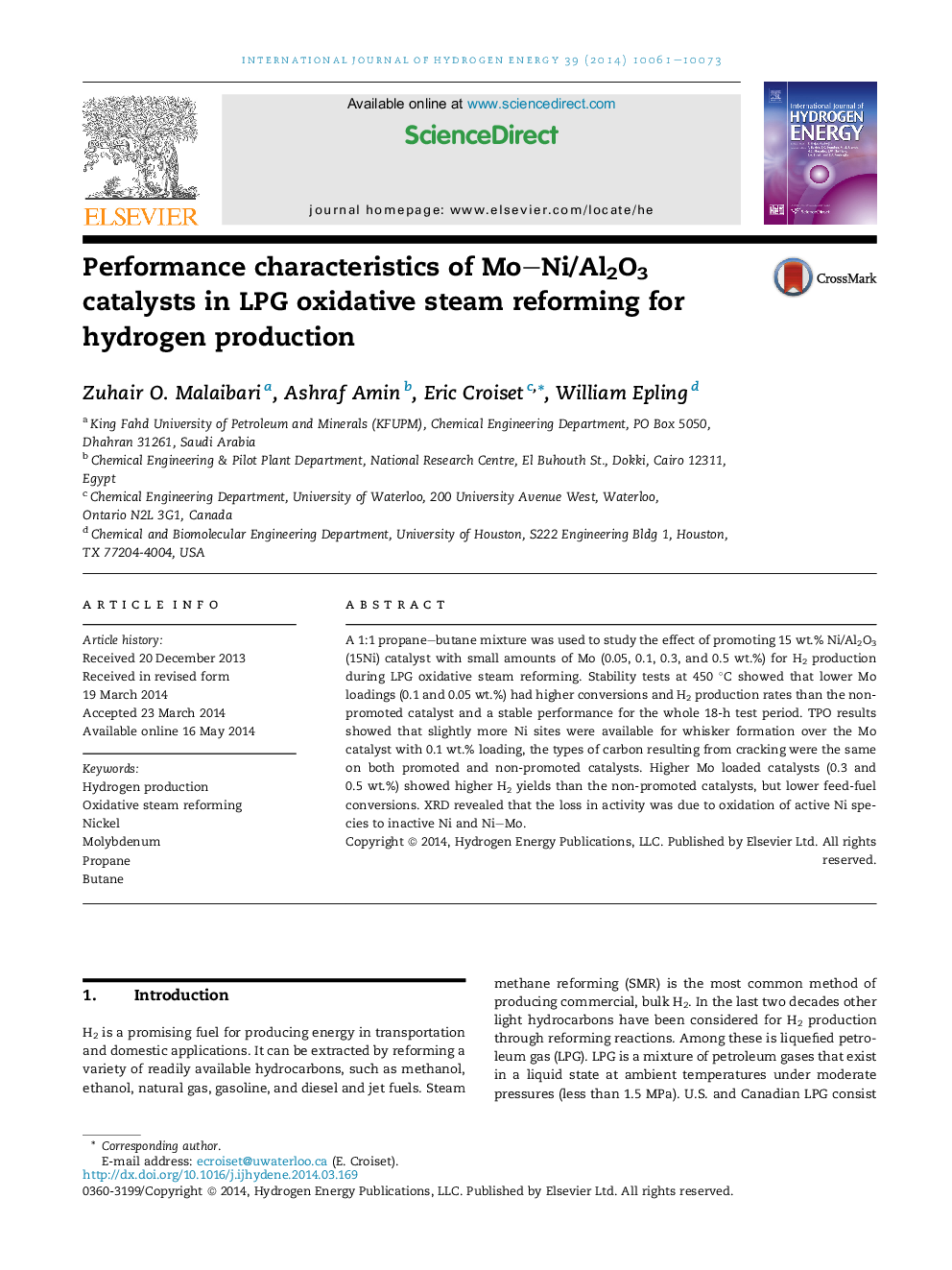| Article ID | Journal | Published Year | Pages | File Type |
|---|---|---|---|---|
| 1270358 | International Journal of Hydrogen Energy | 2014 | 13 Pages |
•Ni catalysts with small amounts of Mo were used for LPG oxidative steam reforming.•Very low Mo loadings (0.1 wt.%) led to higher conversions and H2 production rates.•Very low Mo loadings (0.1 wt.%) also led to more stable performance over 18 h.•Mo loading above 0.5 wt.% led to lower activities and faster deactivation.
A 1:1 propane–butane mixture was used to study the effect of promoting 15 wt.% Ni/Al2O3 (15Ni) catalyst with small amounts of Mo (0.05, 0.1, 0.3, and 0.5 wt.%) for H2 production during LPG oxidative steam reforming. Stability tests at 450 °C showed that lower Mo loadings (0.1 and 0.05 wt.%) had higher conversions and H2 production rates than the non-promoted catalyst and a stable performance for the whole 18-h test period. TPO results showed that slightly more Ni sites were available for whisker formation over the Mo catalyst with 0.1 wt.% loading, the types of carbon resulting from cracking were the same on both promoted and non-promoted catalysts. Higher Mo loaded catalysts (0.3 and 0.5 wt.%) showed higher H2 yields than the non-promoted catalysts, but lower feed-fuel conversions. XRD revealed that the loss in activity was due to oxidation of active Ni species to inactive Ni and Ni–Mo.
